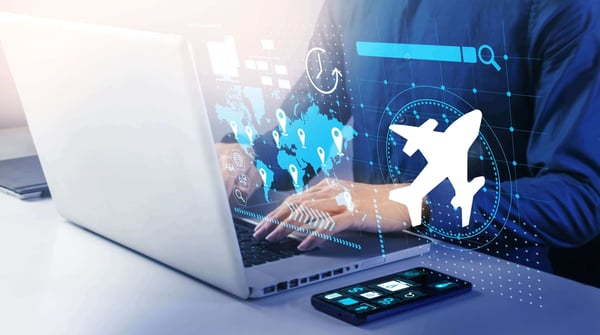Nowadays, technology is advancing more quickly than ever, and virtually every industry on the planet has been forced to adapt. Sometimes, a new piece of technology will integrate itself seamlessly into a pre-existing system, causing little inconvenience. Other times, an industry will have to wrap itself around this new innovation in order to accommodate it. These are known as disruptive innovations, and the aviation industry has been subject to several of them in the recent past.
Disruptive innovations are often costly to implement, but their long-term benefits should not be overlooked. The following technologies from recent years have helped the aviation industry reduce maintenance costs and increase safety standards for both personnel and passengers:
Digital Twins
At first glance, digital twins don’t appear to be a ground-breaking innovation. In short, digital twins are graphical models of physical entities, such as airplanes, airports, or maintenance components. However, when developed to high enough precision, these graphical models can be used in simulations to test out new projects and even predict problematic issues before they occur in real life. The ability to foresee obstacles allows for businesses to allocate resources in a more efficient and effective manner. QOCO partner Rolls-Royce engage in working with digital twins in their intelligent engine vision.
Robotic Technologies
While mechanical robots aren’t a brand-new invention by any means, the use of machine learning to further develop this technology has made them a worthy investment for airport businesses. Menial tasks previously allocated to humans can now be automated thanks to cheaper, more reliable technology. These tasks include aircraft dent & buckle drone inspections, simple maintenance tasks, to baggage checks. As the field of robotics advances, the more efficiently an environment can run.
IoT and Machine Learning
The Internet of Things (or IoT for short) combined with machine learning has allowed for data sharing at a scale never seen before. Essentially, the Internet of Things is a network of physical objects communicating to one another through the internet. Machine learning, which requires massive amounts of data to function to its full potential, greatly benefits from such networks in order to optimize part of a business’s day-to-day activities.
When it comes to the aviation industry, the IoT and machine learning function best together in predictive maintenance. Reading live data from all sorts of aircraft components (flight engines in particular) allows for companies to know which pieces of hardware need fixing or tweaking ahead of time. This way, numerous maintenance tasks can be scheduled together in order to reduce time spent on the ground, and companies can greatly reduce replacement costs by taking care of their equipment before it poses drastic or even irreversible problems.
Decarbonization Technologies
In the field of decarbonization and increased fuel efficiency, most technological advances have been marginal at best. Even with the development of more efficient engines over time, fuel costs still account for approximately 30% of an airline’s overhead. This is all without considering the environmental impacts of the industry, which are becoming a growing concern. A disruptive technology in the field of fuel efficiency is just what the aviation industry needs to overcome the hurdles it will have to overcome in the future, and research companies should invest accordingly.
In the short term, it might seem unwise to invest in disruptive technologies when the aviation industry is already profitable. However, if airline companies want to make meaningful steps forward and breach barriers that were previously thought to be unbreachable, disruptive technologies are exactly what they need. In addition, companies that refuse to implement these innovations or even develop new ones risk falling by the wayside as their competitors surpass them. Although disruptive technologies can be a hefty investment, they should be seen as an opportunity for the aviation industry to carve a better future for itself.



 Tomi Kaukinen
Tomi Kaukinen
 If you are interested in knowing how you can improve your efficiency in maintenance operations, book a 30-minutes discovery call with us.
If you are interested in knowing how you can improve your efficiency in maintenance operations, book a 30-minutes discovery call with us.

